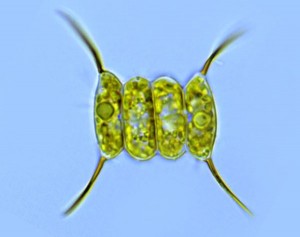SSEP Mission 7 Researched Winner
For our experiment, we have chosen to research Petaluma’s high school’s grade 12 winners. Their experiment is “At What Rate Will Algae Reproduce in a Micro Gravitational Setting Versus on Earth.” In their summery, they talk about how microalgae can produce a lot of oil, and some algae can produce 77% of oil. Because most algae need light to grow, for their experiment the used scenedesmus, which is an algae that can grow without sunlight. These algae can grow only on glucose and can still reproduce. The study is looking for differences in the biomass reproduction in space compared to how it reproduces on earth. It can also be used to compare the amount of oil produced. With the problem of scarce none renewable resources in the world today they hope that this could help with future resource. They thought it was important to study different places that algae can grow so they can make the most of where it can grow faster and better. They want to prove that if they can show that algae can grow faster in space then they should continue to do so instead of on earth. The SSEP 7 mission was launched on April 8th 2016, and so the experiment was fairly recent, as well as the experiment has finished, it came back to earth on May 11, 2016.
Scenedesmus Scenedesmus
Background information
-Micro algae bio mass can be used to produce bio fuel, animal food, and dietary supplements
- Micro algae produces an average of 5000-15000 gallons of oil per acre per year
- because light is not available in the payload box on the ISS they have chosen a heterotrophic strain of algae that can can reproduce with no sun light.
Scendesmus is an algae used in biofuel production that can only survive and reproduce on glucose
Most algae reproduce by mitosis.
Micro algae or microscopic algae grow either in marine or fresh water systems.
It must be provided light to survive or reproduce.
It is determined that algae reproduce faster in micro gravitational setting.
Scenedesmus
Control and experimental groups
The difference between control and experimental groups is that the control group is the students and the experimental group is the astronauts in space doing the experiments. The main difference between the two were that the control group did the normal experiment on earth. They took the algae and grew it in the dark and observed how fast it grew the nutrients it produced etc. The experimental group watched and tested the experiment in space, and made sure it ran smoothly in space.
Petaluma’s Gr12 students
SSEP -Why we think they won.
We think that the gr12’s from Petaluma’s High school’s topic of “At What Rate Will Algae Reproduce in a Micro Gravitational Setting Versus on Earth.” won because of their reasoning. There was another group that didn’t win with the same topic, and so we read the briefing of that experiment as well. The proposal that won was very well described and had a solid idea. Everything that they said was leading up to or about the exact topic. As well as their topic was very specific on their idea. They had everything extremely well thought out and planned, where as the other wasn’t as clear. Also their experiment was about helping produce more oil/how fast it can reproduce. They said that their experiment was meant to help future research and the worlds future resources because of the small amount of important resources in the world. Because of that reasoning I think that it made the SSEP choose them. It is smart and resourceful but also makes sense and can be used in the future if successful.
The space craft used for SSEP mission 7.
I contacted Petaluma High School asking about their experiment results, and I soon got a response, saying that they had only recently gotten back their experiment and were still analyzing and studying their results. The teacher said that when they have finished analyzing it they will contact me again and share their information with me. I will update my post with their results sometime in November when they have predicted to finish their conclusions. I have spoken to two of the students, who will keep me updated with what they find out.
Picture use:
Pic 1: http://cfb.unh.edu/phycokey/Choices/Chlorophyceae/colonies/colonies_not_flagellated/SCENEDESMUS/Scenedesmus_Image_page.html
Pic 2: http://cfb.unh.edu/phycokey/Choices/Chlorophyceae/colonies/colonies_not_flagellated/SCENEDESMUS/Scenedesmus_Image_page.html
Pic 3: https://www.studyblue.com/notes/note/n/phyc-prac/deck/8596330
Pic 4: http://www.nasa.gov/mission_pages/station/research/experiments/2090.html
Pic 5:http://ssep.ncesse.org/2016/05/watch-live-the-flight-of-ssep-m7-odyssey-ii-return-to-earth-may-11-2016/





Excellent thorough review. Wonderful explanation of the experiment. I am so glad you contacted the team and will update this post when you get the results. I think that the work you did here will really help you as you decide on your own experiment for SSEP!